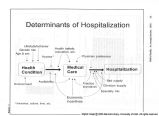| OCR Text |
Show Utah's Health Status This section of the Review includes several mortality and morbidity indicators comparing Utah with the United States. The data are examined over a period of years in order to elicit trends. When relevant, the data are broken down by gender and age. Mortality indicators are covered first, followed by morbidity indicators. Utah fares well when compared to the United States for almost all mortality and morbidity indicators included in this section. There are exceptions, however. Utah has higher rates than the U.S. for prostate cancer, diabetes mellitus, and suicide, including adolescent suicide, and similar rates for pneumonia and influenza mortality and female breast cancer. Self-Perceived Health Status Utah and U.S. Departments of Health conduct health status surveys every five years. The first two surveys for the U.S. were conducted in 1984 and 1989; Utah's surveys were administered in 1986 and 1991. One question in these surveys asked respondents to rate their own health status. Utahns tended to report their health status as "excellent" or "very good," scoring slightly higher than most Americans. Table 23. Self-Perceived Health Status Utah (in %) U.S. (in %) Response 1986 1991 1984 1989 Poor/Fair 7.8 7.8 10.5 9.1 Good 18.2 22.6 23.4 22.2 Very Good 30.8 31.7 25.8 27.9 Excellent 43.2 37.9 40.3 40.7 Table 24. Self-Perceived Health Status (Behavior Risk Factor Survellence System) Utah Response 1993 Poor/Fair 11.6 Good 24.9 Very Good 37.2 Excellent 26.2 As an interim measure, survey results from the Behavioral Risk Factor Surveillence System conducted in 1993 are included here. This is from a different survey, with different demographics and a smaller sample size; however the same question was asked. In this survey, fewer Utahns self-reported their health as "excellent;" more reported their health as "very good." The percentage of Utahns rating their health status as "fair" or "poor" rose. Utah's Health: An Annual Review 1995 59 |


























































































































































